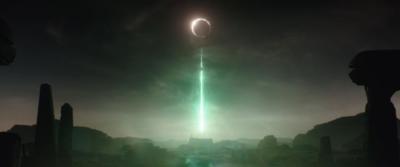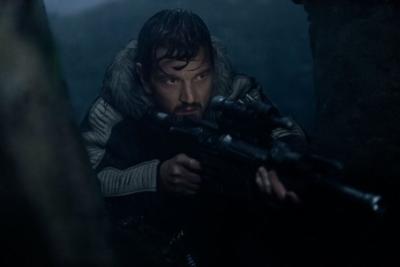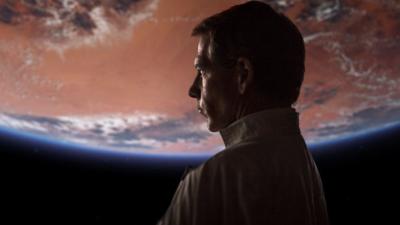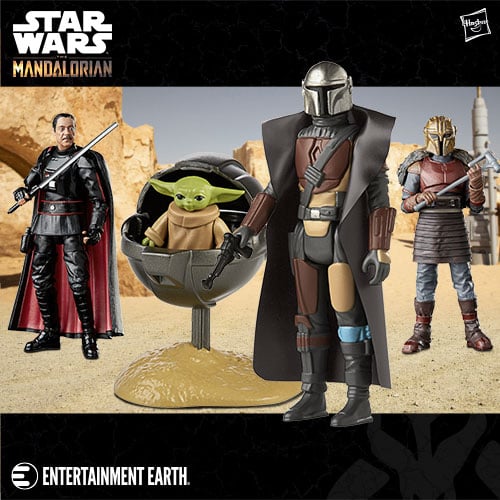Rogue One: Adding Depth To The Dark Side
Posted by Dustin on December 19, 2016 at 08:28 AM CST
This article was written by J.Q. Ronan, and published here with his permission. You can follow his blog right here! He's Also on Twitter and Facebook! If you are interested in sharing original content here on TheForce.net please contact us.
Star Wars films are no strangers to harrowing stories or moments. In some sequences like the Battle of Hoth or the Battle of Endor, the camera offers several shots of dying soldiers. In other moments, like Anakin’s destruction of the Jedi Temple, the films more clearly hone in on known characters’ downfalls while taking the time to ensure the audience understands the dramatic importance behind each dark detail.
Rogue One, however, adds a whole new level to the grisly side of Star Wars. While it still balances lightheartedness and drama in some scenes, the film is much closer to the tone of Saving Private Ryan than any other movie in the Star Wars franchise. It hones in on the pain of those within its story, and mercilessly - and intriguingly - showcases a more gritty dark side of the Star Wars galaxy through a variety of tools:
1. The Suffering:
The suffering in Rogue One adds a layer of pain that we’ve never seen in the franchise before. One moment that utilizes this is, of course, the scene in which Darth Vader immolates several Rebels. Though the moment is short, the sheer panic and mayhem that explodes when Vader approaches the men is enough to show the audience just how horrifying the Galactic Civil War really was. No longer are we seeing faceless Clone Troopers blow up droids, or watching the moment that only foreshadows Anakin killing children—this time, we’re up close and personal with several human warriors that we’re rooting for, listening as they scream in horror before being slaughtered.
Second, a smaller, albeit possibly more telling detail in the film that showcased suffering was near the beginning, when Jyn saves a crying child. This is the first time in the Star Wars films that the audience has seen a child actually despairing in the middle of combat. Though we get the dramatic hint towards Anakin Skywalker’s killing of younglings and see one young warrior fight in Episode 3, Star Wars had yet to show us the emotional reaction of a child within the horrors of war. As soon as we glimpse this moment, however, Rogue One carries on with the film, not stopping to dramatize or emphasize the point any more than it needs. It simply shows that children are being hurt by the Rebels’ battles and moves on. These two scenes offered a glimpse at just how terrifying the galaxy could be, whether one was a child or a grown soldier, and in so doing added a more austere level of human suffering that was previously unprecedented in Star Wars movies.
2. The Story:
More obviously, the overall story of Rogue One shows just how dark Star Wars can be. It didn’t take its time dramatizing every single death that occurred, nor did it withhold itself from harming the most beloved characters—it simply showed the deaths of its protagonists, sometimes with an almost indifferent tone, as though simply detailing the sacrifices made. First came Galen’s death, which, unlike Vader’s in Episode 6, gave his child no comfort or resolution apart from confirming that she still had a job to do. Then K-2SO, the film’s main comedic source, was abruptly eliminated, and then Bodhi was taken in an unforgiving explosion, and so on and so forth until every main protagonist was gone. Some died holding each other for several painful moments, but others fell in quick, bursting sequences of flame and shrapnel that were as merciless as the bombs that caused them. The uncompromising, successive, and varied deaths that all but ended the story showed that Star Wars doesn’t need a happy ending—that sometimes, people will fight the good fight and still be destroyed by the dark.
3. The Rebellion:
Perhaps most importantly, Rogue One shows a much more questionable side of the Rebellion than most fans had glimpsed before. First to note are the harsh decisions of the Rebels around Galen Erso: one Rebel leader explicitly tells Cassian Andor to kill Jyn’s father, even though he comes to understand that the Imperial superweapon that Galen’s helping with is already operational. Even after Andor refuses this order, however, X-Wings scramble on Galen’s location and are the cause of his death—showing just how ruthless the Rebellion can be, and confirming how the Empire is not alone in accepting collateral damage for its cause.
Second, Rogue One also displays the Rebellion’s dark side simply by having characters reveal the organization’s weaknesses. Bodhi, the Imperial pilot who throws in his lot against the Empire, seems to perceive Saw Gerrera’s violent men with fear and learns that Saw is happily willing to risk Bodhi’s sanity for his own safety. When Jyn debates with the Rebel leaders that are deliberating around a table, the coalition almost looks to be a disorganized, spineless mess that doesn’t even make the decision to try attacking the Death Star. And for the Imperials and many citizens of Jedha, those fighting the Empire must look to be a group of troublesome, radical terrorists that stir up deadly skirmishes in their cities. These details show just how disorganized and dangerous the Rebellion truly was to itself and others around it.
Finally, Cassian Andor provides perhaps the most in-depth view of the Rebellion’s dark side. Within one of the first scenes of Rogue One, he shoots an unarmed man in the back. Soon after, he keeps Jyn behind in his ship for the purpose of shooting her father. Even after deciding not to assassinate Galen Erso, he later justifies his joining Jyn by stating that he’s done too many things that he wanted to forget. He speaks for perhaps twenty other rebels when he expounds that his dark deeds need a purpose. Instead of claiming to help the galaxy or serve some ethical code, he defends his loyalty to Jyn only with a desire to give his actions a sense of importance and meaning. This explanation takes away from a gaudy, heroic explanation for the Rebels’ actions, and shows how, sometimes, people in this war were only fighting and killing so they could remain part of something bigger than themselves.
Rogue One took on a darker tone than most Star Wars films, and in so doing was able to make a profound impact. As I stated four months before this film was released, all the heroes needed to die to show the sacrifice it took to be a Rebel. But the movie also adds complexity to the dark side of the Star Wars franchise by showing how much one could suffer within its worlds, by ending a story with several uncompromising defeats, and by displaying just how uncertain the morality of the Rebellion could be. Perhaps most important of all, however, was one lesson the film could only offer because of its dark, grim content. Saw Gerrera himself explained the point of this takeaway in the newest Star Wars novel, Catalyst:
"That wasn't the point."
"What was?"
"Believing that your actions mattered, and believing that a good end would come of them, even if you didn't live to see the results."
Related Stories:
* Free Association Thread.
* Love for All Seasons. For OTP #34.
* Isnt Anakin a bit too young for Padme?
* Hearts of the Children—OT-redefining Skywalker Family AU
* Love for All Seasons. For OTP #34.
* Isnt Anakin a bit too young for Padme?
* Hearts of the Children—OT-redefining Skywalker Family AU











